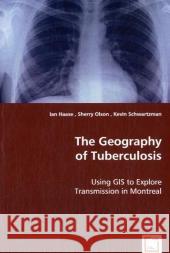The Geography of Tuberculosis » książka
The Geography of Tuberculosis
ISBN-13: 9783836465625 / Angielski / Miękka / 2008 / 124 str.
While the overall annual incidence of tuberculosis (TB) on the Island of Montreal has been stable at 10 per 100,000 in recent years, incidence varies tremendously by country of birth and by neighbourhood. It is not clear how much of this variation reflects population distribution, and how much reflects localized risk factors and/or local transmission. Precise mapping and spatial statistical analysis allowed for the identification of two types of TB concentrations: hotspots - raw concentrations of cases, and high-incidence zones - where TB incidence significantly exceeds the rate expected. The high-incidence zones were not fully explained by known risk factors for TB, such as high population densities or low incomes, when aggregated at the census tract level. The results were linked with Mycobacterium tuberculosis genotyping data to search for evidence of recent transmission.We found that there is substantial aggregation of TB in Montreal, beyond the concentration of the foreign-born as a group, and evidence of recent transmission contributing to high incidence was uncovered in one area of the city.











